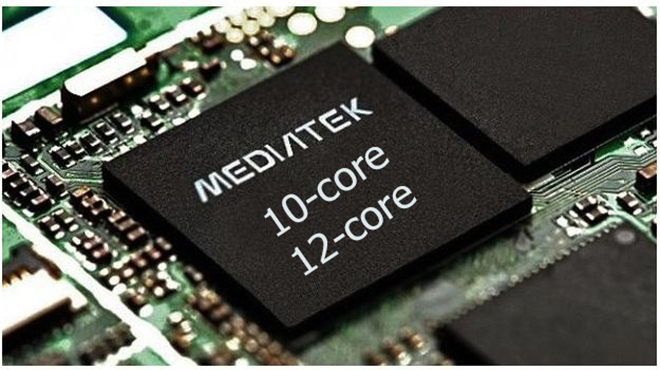China's HiSilicon First on TSMC FinFET Process
Peter Clarke
HiSilicon Technologies Co. Ltd., the chip design arm of telecommunications giant Huawei Technologies Co. Ltd. (Shenzhen, China), has produced an ARM-based 32-core, 64-bit networking processor implemented in 16nm FinFET manufacturing process from Taiwan Semiconductor Manufacturing Co. Ltd. (Hsinchu, Taiwan).
The company is the first to be named by TSMC as a user of an advanced chip manufacturing process that was expected to come in to volume production in 2015.
TSMC said that HiSilicon's is the first fully functional networking processor implemented on its 16nm FinFET manufacturing process, which leaves plenty of scope for other firsts for companies that have not yet gone public. TSMC's 20nm planar CMOS process began making the A8 processor for Apple in about June 2014.
The foundry said the 16FF process entered so-called "risk production" with excellent yields in November 2013 paving the way for TSMC and its customers to engage in product tape-outs, pilot activities and early sampling. TSMC's chairman Morris Chang had said in July that he expected to fall temporarily behind other foundries offering FinFET production in terms of market share because they had skipped the 20nm CMOS node. It is assumed Chang was referring to the Samsung Globalfoundries alliance on a nominal 14nm FinFET process expected to produce chips for customers before the end of 2014.
TSMC's 16nm FinFET process offers twice the gate density of TSMC’s 28HPM process, and operates more than 40 percent faster at the same total power, or reduces total power over 60 percent at the same speed. Previously the 20nm CMOS was benchmarked by TSMC as providing a 20 percent speed improvement at same power or a 30 percent power reduction at same performance, in addition to a 1.9x density increase.
In other words the 16nm FinFET process provide superior power-performance at about the same transistor density as the 20nm planar CMOS process achieves.
While the latest announcement from TSMC does not necessarily bring forward 16FF mass production, no mention was made of volume production for HiSilcion it will create the impression that TSMC is level-pegging or even ahead of Samsung and Globalfoundries.
As well as using the 16FF process HiSilicon has made use of 3D packaging technology to combine 16nm logic chips with a 28nm I/O chip, TSMC said.
"We are delighted to see TSMC's FinFET technology and CoWoS solution successfully bringing our innovative designs to working silicon," said Teresa He, president of HiSilicon, in a statement issued by TSMC. She said the 32-core ARM Cortex-A57 processor is aimed at wireless communications and routers and achieves a clock frequency of 2.6-GHz. "This networking processor's performance increases by threefold compared with its previous generation. Such a highly competitive product can support virtualisation, SDN [software-defined networking] and NFV [network function virtualization] applications for next-generation basestations, routers and other networking equipment, and meet our time-to-market goals," she added.
Peter Clarke
HiSilicon Technologies Co. Ltd., the chip design arm of telecommunications giant Huawei Technologies Co. Ltd. (Shenzhen, China), has produced an ARM-based 32-core, 64-bit networking processor implemented in 16nm FinFET manufacturing process from Taiwan Semiconductor Manufacturing Co. Ltd. (Hsinchu, Taiwan).
The company is the first to be named by TSMC as a user of an advanced chip manufacturing process that was expected to come in to volume production in 2015.
TSMC said that HiSilicon's is the first fully functional networking processor implemented on its 16nm FinFET manufacturing process, which leaves plenty of scope for other firsts for companies that have not yet gone public. TSMC's 20nm planar CMOS process began making the A8 processor for Apple in about June 2014.
The foundry said the 16FF process entered so-called "risk production" with excellent yields in November 2013 paving the way for TSMC and its customers to engage in product tape-outs, pilot activities and early sampling. TSMC's chairman Morris Chang had said in July that he expected to fall temporarily behind other foundries offering FinFET production in terms of market share because they had skipped the 20nm CMOS node. It is assumed Chang was referring to the Samsung Globalfoundries alliance on a nominal 14nm FinFET process expected to produce chips for customers before the end of 2014.
TSMC's 16nm FinFET process offers twice the gate density of TSMC’s 28HPM process, and operates more than 40 percent faster at the same total power, or reduces total power over 60 percent at the same speed. Previously the 20nm CMOS was benchmarked by TSMC as providing a 20 percent speed improvement at same power or a 30 percent power reduction at same performance, in addition to a 1.9x density increase.
In other words the 16nm FinFET process provide superior power-performance at about the same transistor density as the 20nm planar CMOS process achieves.
While the latest announcement from TSMC does not necessarily bring forward 16FF mass production, no mention was made of volume production for HiSilcion it will create the impression that TSMC is level-pegging or even ahead of Samsung and Globalfoundries.
As well as using the 16FF process HiSilicon has made use of 3D packaging technology to combine 16nm logic chips with a 28nm I/O chip, TSMC said.
"We are delighted to see TSMC's FinFET technology and CoWoS solution successfully bringing our innovative designs to working silicon," said Teresa He, president of HiSilicon, in a statement issued by TSMC. She said the 32-core ARM Cortex-A57 processor is aimed at wireless communications and routers and achieves a clock frequency of 2.6-GHz. "This networking processor's performance increases by threefold compared with its previous generation. Such a highly competitive product can support virtualisation, SDN [software-defined networking] and NFV [network function virtualization] applications for next-generation basestations, routers and other networking equipment, and meet our time-to-market goals," she added.
Code:
http://electronics360.globalspec.com/article/4588/china-s-hisilicon-first-on-tsmc-finfet-process














